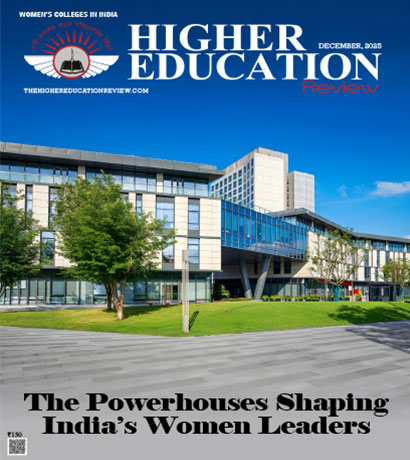Building a Positive Organizational Culture for Long Term Growth and Employee Well-Being
 Neha Gupta is a seasoned HR professional with over two decades of experience, currently serving as Material's Vice President of HR. Throughout her dynamic career, she has demonstrated expertise in various domains, including retail technology, consulting, and analytics. Neha has contributed to the HR landscape in India and garnered international experience in Europe. Her leadership extends beyond geographical boundaries, where she has successfully managed teams and businesses.
Neha Gupta is a seasoned HR professional with over two decades of experience, currently serving as Material's Vice President of HR. Throughout her dynamic career, she has demonstrated expertise in various domains, including retail technology, consulting, and analytics. Neha has contributed to the HR landscape in India and garnered international experience in Europe. Her leadership extends beyond geographical boundaries, where she has successfully managed teams and businesses.
In the swiftly changing and highly competitive landscape of today's workplace, an organization's success surpasses mere financial metrics and market dominance. It hinges on the cultivation of a positive and thriving organizational culture—an elusive yet powerful force that shapes an organization's essence, influencing employee engagement, fostering innovation, and ensuring sustained success. At its core, the establishment of a shared purpose and a set of clear values functions as guiding doctrines, unifying the workforce under a common vision. This shared understanding not only promotes harmony but also instils a profound sense of purpose, creating a robust foundation for a unified and goal-oriented culture. Within this dynamic environment, organizational triumph is intricately linked to the nurturing of a positive culture, making it an indispensable element for long-term prosperity and employee fulfilment.
Fostering a Positive Organizational Culture
Effectively measuring the impact of organizational culture involves more than intuition; it necessitates thoughtful design and utilization of invaluable tools such as periodic surveys. These surveys serve as instruments for assessing alignment with shared values, levels of collaboration, and overall employee satisfaction. The ability to quantify these cultural elements provides tangible insights, enabling organizations to track progress and make informed decisions for continuous improvement. However, the journey toward a positive culture is not without its challenges. One common pitfall is the tendency to prioritize short-term success over holistic growth, inadvertently fostering a culture of individualism and hindering long-term success. Overcoming this challenge demands a strategic shift in reward structures, aligning them with organizational values and long-term objectives.
Addressing disruptive behaviours and building psychological safety are crucial steps in fostering a positive culture. These measures ensure a harmonious work environment, laying the groundwork for innovation and adaptability. Employee feedback and surveys emerge as pivotal instruments in understanding and enhancing organizational culture. These tools provide a real-time pulse check, enabling organizations to gauge sentiments, identify areas of concern, and track changes over time. The cloak of anonymity in surveys fosters candid responses, contributing to a more accurate reflection of the organizational climate.Clear and transparent communication is indispensable in ensuring that employees comprehend and embrace the organization's culture and values. Utilizing diverse channels, such as internal websites, handbooks, and training programs, facilitate the effective dissemination of this information.
Nurturing a Positive Workplace Culture
Embedding these values into recruitment, performance appraisals, and daily decision-making reinforces their pivotal role in shaping organizational behaviour. This holistic approach guarantees that the organizational culture is not just a theoretical concept but a tangible experience for every workforce member.Effective business leaders play a proactive role in shaping a positive organizational culture through continuous learning, networking, and strategic partnerships with HR. Recognizing HR as a strategically ensures organizational adaptability and responsiveness to cultural shifts. Emphasizing a shared purpose, addressing challenges, actively seeking employee input, and staying informed are crucial for creating a culture that reflects organizational values and contributes to long-term success. Establishing such a culture necessitates a steadfast commitment to continuous improvement, adaptability, and a genuine investment in employee well-being. This dedication serves as the foundation for both organizational success and the satisfaction of its employees.
Navigating the dynamic workplace, a positive culture is crucial for enduring success and employee contentment, serving as the cornerstone of organizational resilience and fulfillment. It provides the essential foundation that empowers the organization to thrive, ensuring sustained success and lasting satisfaction among its workforce in the ever-evolving professional landscape. Organizations that give precedence to and nurture a positive culture lay the groundwork for resilience, enabling them to thrive amid the complexities of the modern professional landscape. A positive culture acts as the driving force propelling the organization forward, ensuring not only the achievement of short-term goals but also the creation of an environment conducive to long-term success and employee satisfaction, laying the foundation for enduring prosperity and contentment within the workplace.
The powerful impact of a positive organizational culture is more than just a trendy term; it's a crucial necessity for modern businesses. It transcends surface-level gestures, becoming a tangible reality for each workforce member. Whether it's shared values, collaboration, or practicing active listening and empathy, every facet of organizational culture plays a role in shaping a workplace that mirrors the organization's principles, fostering ongoing success. Achieving this requires a comprehensive and strategic approach, encompassing leadership, measurement tools, employee input, and the infusion of values into various operational aspects. Investing in a positive culture means investing in the organization's durability, flexibility, and the well-being of its most precious resource—its employees.

